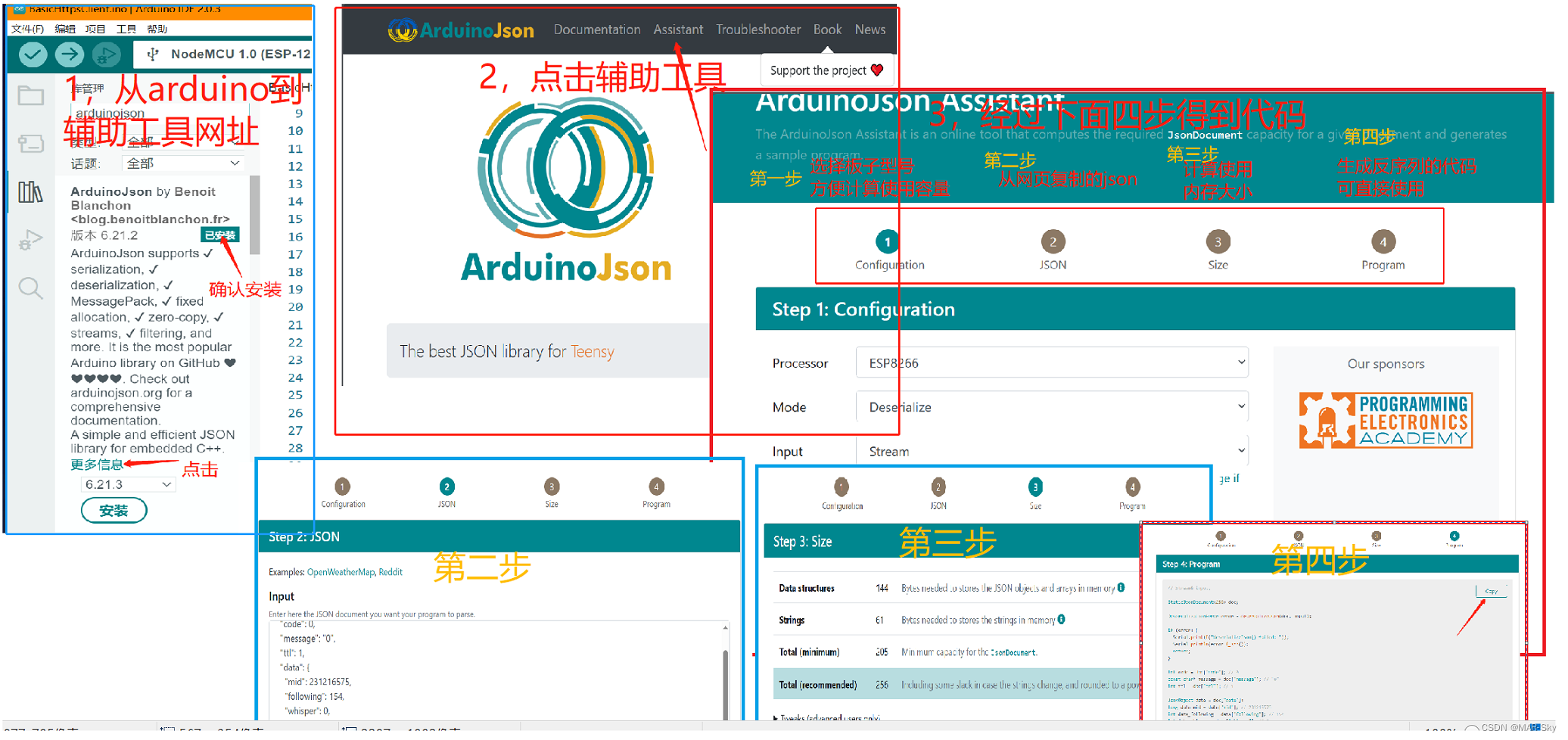参考
http://www.taichi-maker.com/homepage/iot-development/iot-dev-reference/esp8266-c-plus-plus-reference/http-client-secure/certificate-fingerprint/
http://www.taichi-maker.com/homepage/iot-development/iot-platform/esp8266-bilibil-api-tutorial/esp8266-bilibili-api-application/
https://www.bilibili.com/read/cv17367361/
遇到的问题
1,太极创客中的例子不知道为什么不能得到返回数据,显示307重定向,个人觉得是因为http访问方式的问题
在实际操作中,如果使用http+数据的连接字符,在浏览器中自动跳转为https开头的
2,使用太极创客里的例子只是修改http为https也是不能得到正确的数据,
3,考虑到https的保密性和与http访问方式的不同,决定自己使用一下https的库
下面就是个人在使用这个库中的经历,最终得到了想要的效果,后面结合oled显示出来
整体程序流程
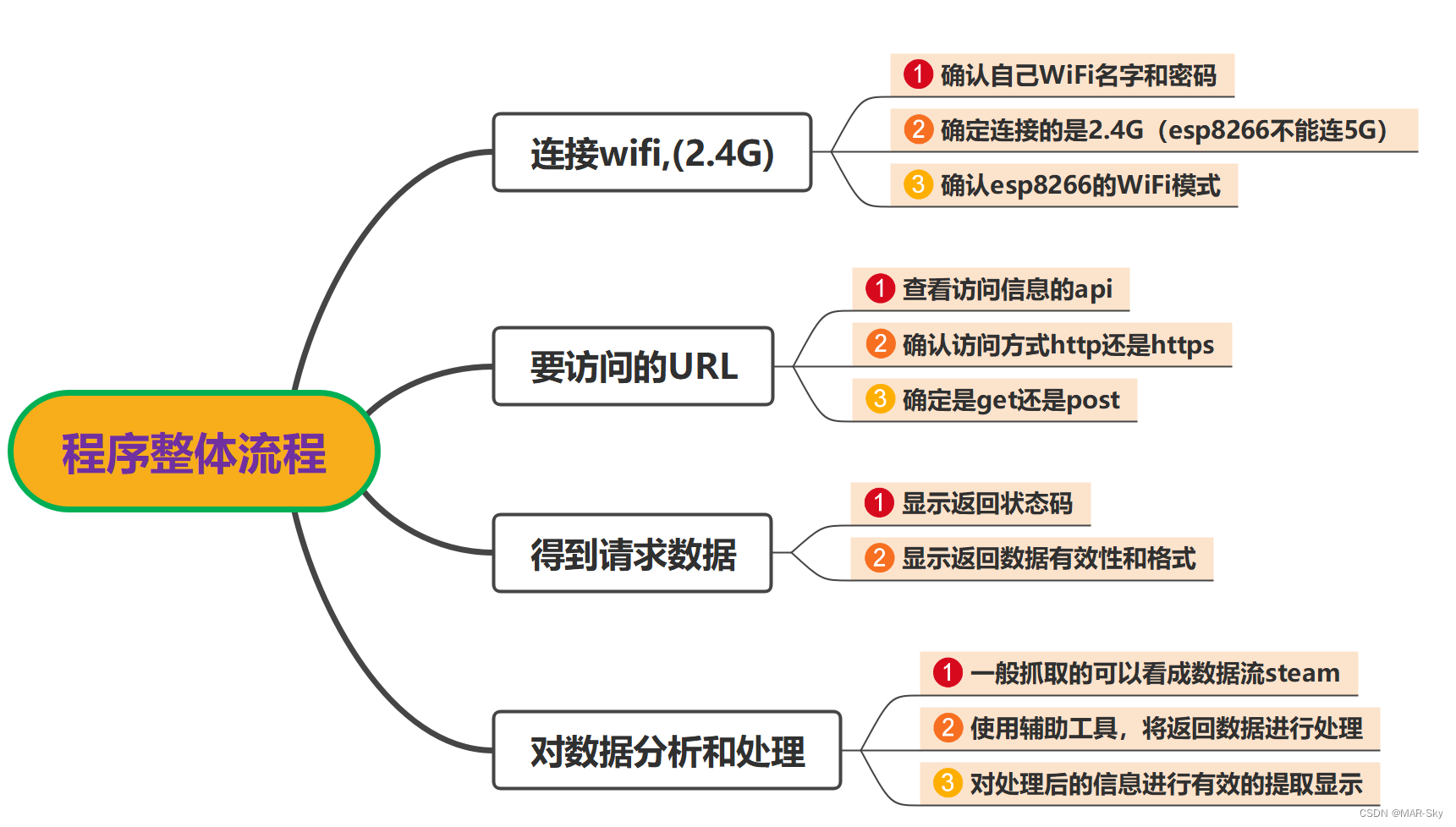
程序
首先程序是根据示例程序中的程序修改而来(确保安装过esp8266的库才会显示),
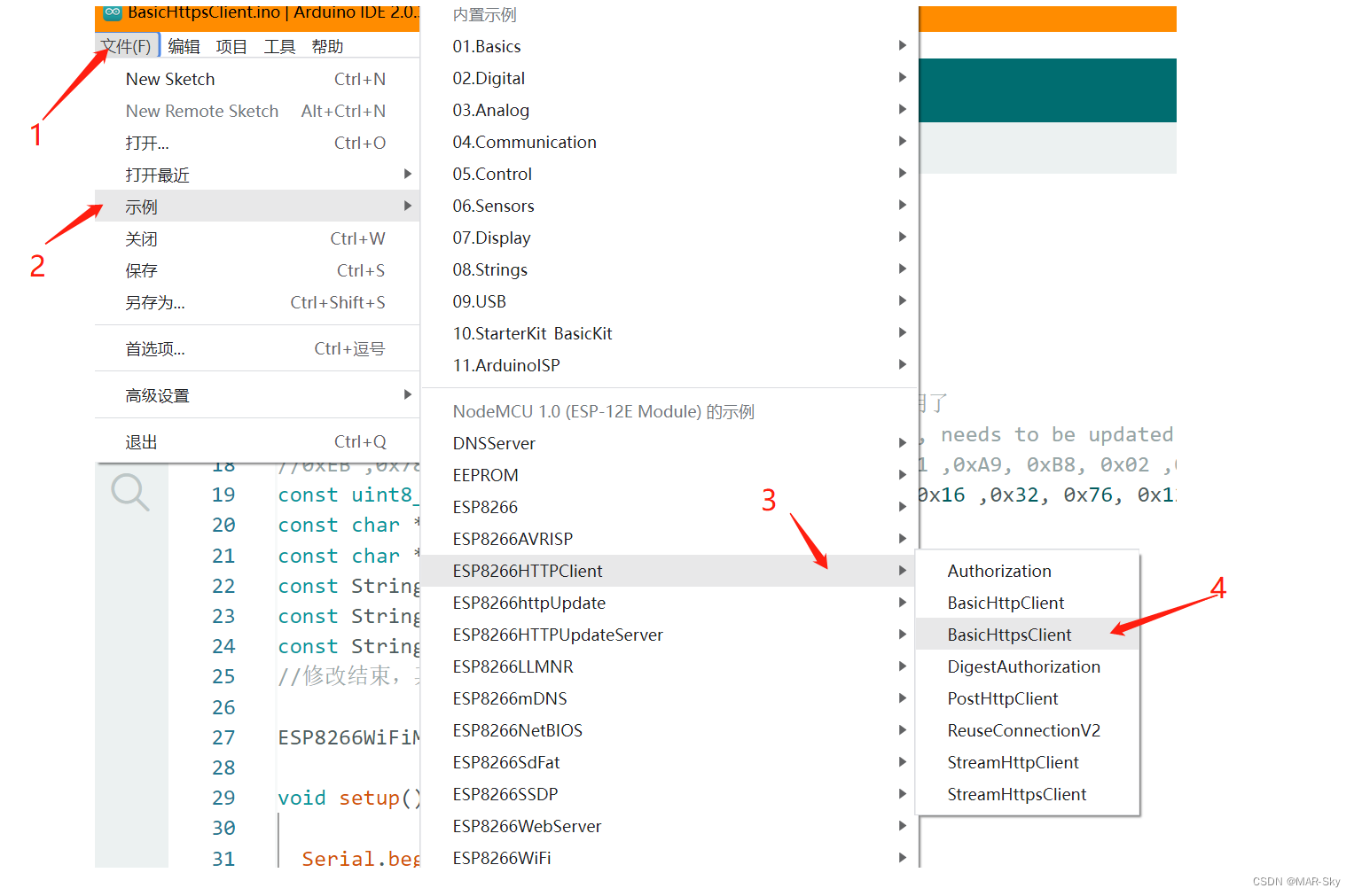
/**
BasicHTTPSClient.ino
Created on: 20.08.2018
*/
#include <Arduino.h>
#include <ArduinoJson.h>
#include <ESP8266WiFi.h>
#include <ESP8266WiFiMulti.h>
#include <ESP8266HTTPClient.h>
#include <WiFiClientSecureBearSSL.h>
//需要自己修改的内容
//修改自己的密钥,也可在下面直接忽略安全访问,就不需要密钥了
// Fingerprint for demo URL, expires on June 2, 2021, needs to be updated well before this date
//0xEB ,0x78, 0xA8 ,0x16 ,0x32, 0x76, 0x12,0xD8, 0x51 ,0xFF
const uint8_t fingerprint[20] = {
0xA9, 0xB8, 0x02 ,0xDF, 0xD6, 0xE7 ,0x32, 0x1D, 0xB9, 0xE8, 0xFF };
const char *ssid = "Tenda_7881A0"; //你的网络名称
const char *password = "88888888"; //你的网络密码
const String UID = "231216575"; //host+path+UID组成了访问网页的url
const String host = "https://api.bilibili.com";
const String path = "/x/relation/stat?vmid=";
//修改结束,其他基本不需要修改
ESP8266WiFiMulti WiFiMulti;
void setup() {
Serial.begin(115200); //设置显示串口波特率
// Serial.setDebugOutput(true);
Serial.println();
Serial.println();
Serial.println();
for (uint8_t t = 4; t > 0; t--) {
Serial.printf("[SETUP] WAIT %d...\n", t);
Serial.flush();
delay(1000);
}
WiFi.mode(WIFI_STA); //客户模式
WiFiMulti.addAP(ssid, password); //设置连接的wifi密码和名称
}
void loop() {
// wait for WiFi connection
if ((WiFiMulti.run() == WL_CONNECTED)) {
std::unique_ptr<BearSSL::WiFiClientSecure> client(new BearSSL::WiFiClientSecure);
client->setFingerprint(fingerprint);
// Or, if you happy to ignore the SSL certificate, then use the following line instead:
// client->setInsecure(); //也可以不使用指纹证书登录
HTTPClient https;
Serial.print("[HTTPS] begin...\n");
if (https.begin(*client, host+path+UID)) {
// HTTPS
Serial.print("[HTTPS] GET...\n");
// start connection and send HTTP header
int httpCode = https.GET(); //访问url返回的状态码
// httpCode will be negative on error
if (httpCode > 0) {
// HTTP header has been send and Server response header has been handled
Serial.printf("[HTTPS] GET... code: %d\n", httpCode);
// file found at server
if (httpCode == HTTP_CODE_OK || httpCode == HTTP_CODE_MOVED_PERMANENTLY) {
String payload = https.getString();
Serial.println(payload);
de_json(payload); //将请求到的json数据进行解析显示
}
} else {
Serial.printf("[HTTPS] GET... failed, error: %s\n", https.errorToString(httpCode).c_str());
}
https.end();
} else {
Serial.printf("[HTTPS] Unable to connect\n");
}
}
Serial.println("Wait 10s before next round...");
delay(3000);
}
void de_json(String input){
//从这里开始是使用辅助工具生成的
StaticJsonDocument<256> doc;
DeserializationError error = deserializeJson(doc, input);
if (error) {
Serial.print(F("deserializeJson() failed: "));
Serial.println(error.f_str());
return;
}
int code = doc["code"]; // 0
const char* message = doc["message"]; // "0"
int ttl = doc["ttl"]; // 1
JsonObject data = doc["data"];
long data_mid = data["mid"]; // 231216575
int data_following = data["following"]; // 154
int data_whisper = data["whisper"]; // 0
int data_black = data["black"]; // 0
int data_follower = data["follower"]; // 1
//辅助工具得到的代码到这里结束,下面是自己想要显示的内容
Serial.println("=======================");
Serial.println(ttl);
Serial.print("Fen Si: "); // 串口监视器输出粉丝数量
Serial.println(data_follower);
Serial.print("Guan Zhu: "); // 串口监视器输出关注数量
Serial.println(data_following);
Serial.print("Hei Ming Dan = "); // 串口监视器输黑名单里的数量
Serial.println(data_black);
Serial.print("=======================");
}
程序中需要的准备工作
下面要根据自己浏览器的实际情况,查看方式可能不太一样(个人使用的是edge)
查看自己需要的哔哩哔哩数据的URL
得到需要的host,path和UID数据
一、找到显示需要数据的网页
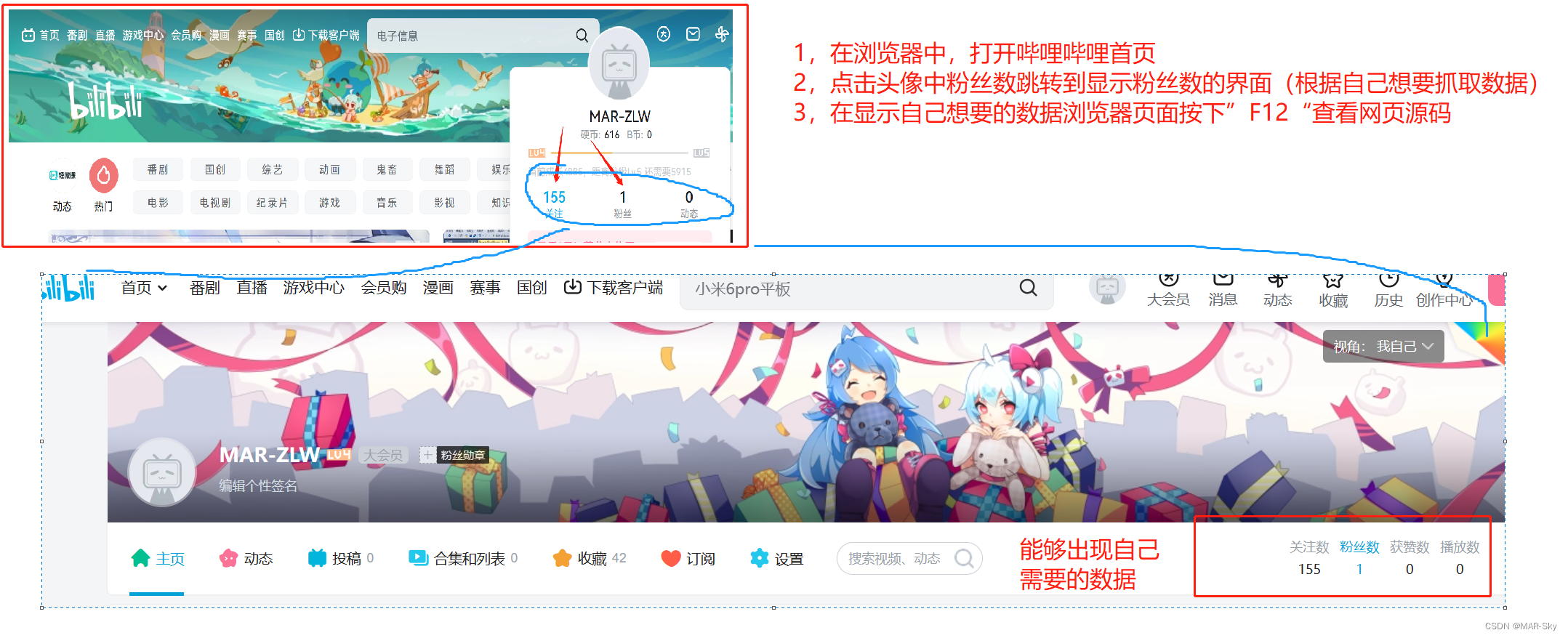
二、查找需要数据的请求信息
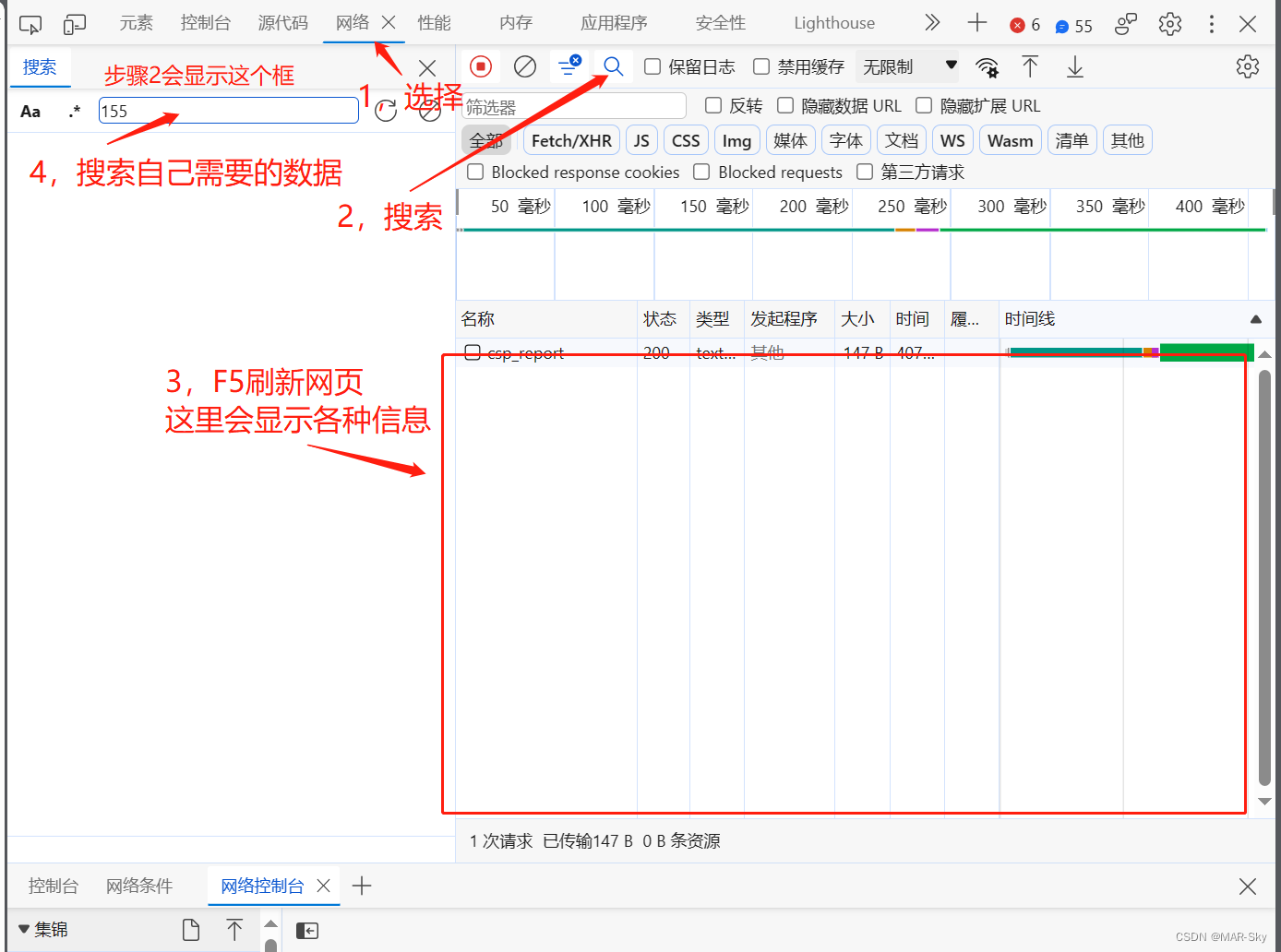
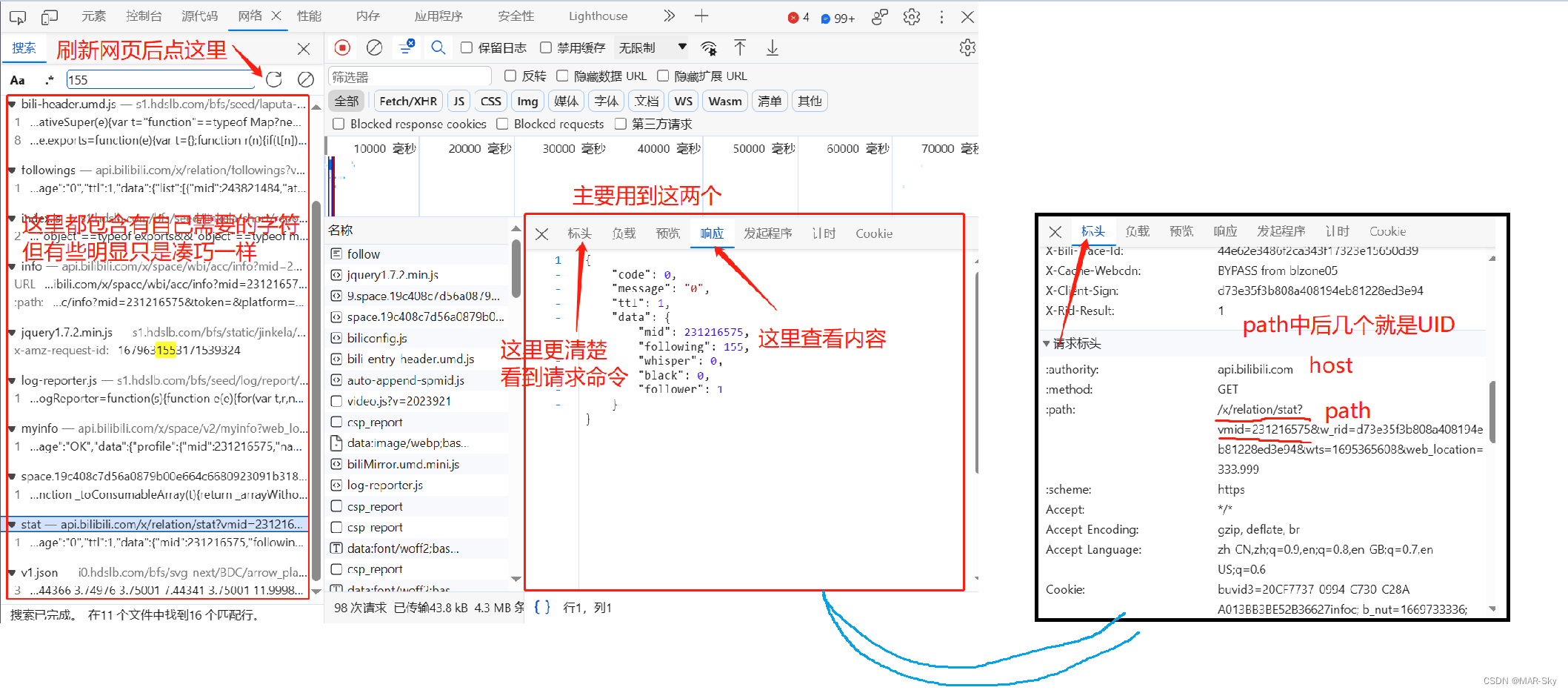
从这里可以找到需要的三个数据
找到认证指纹
最后得SHA-1的指纹,注意这个是有期限的,
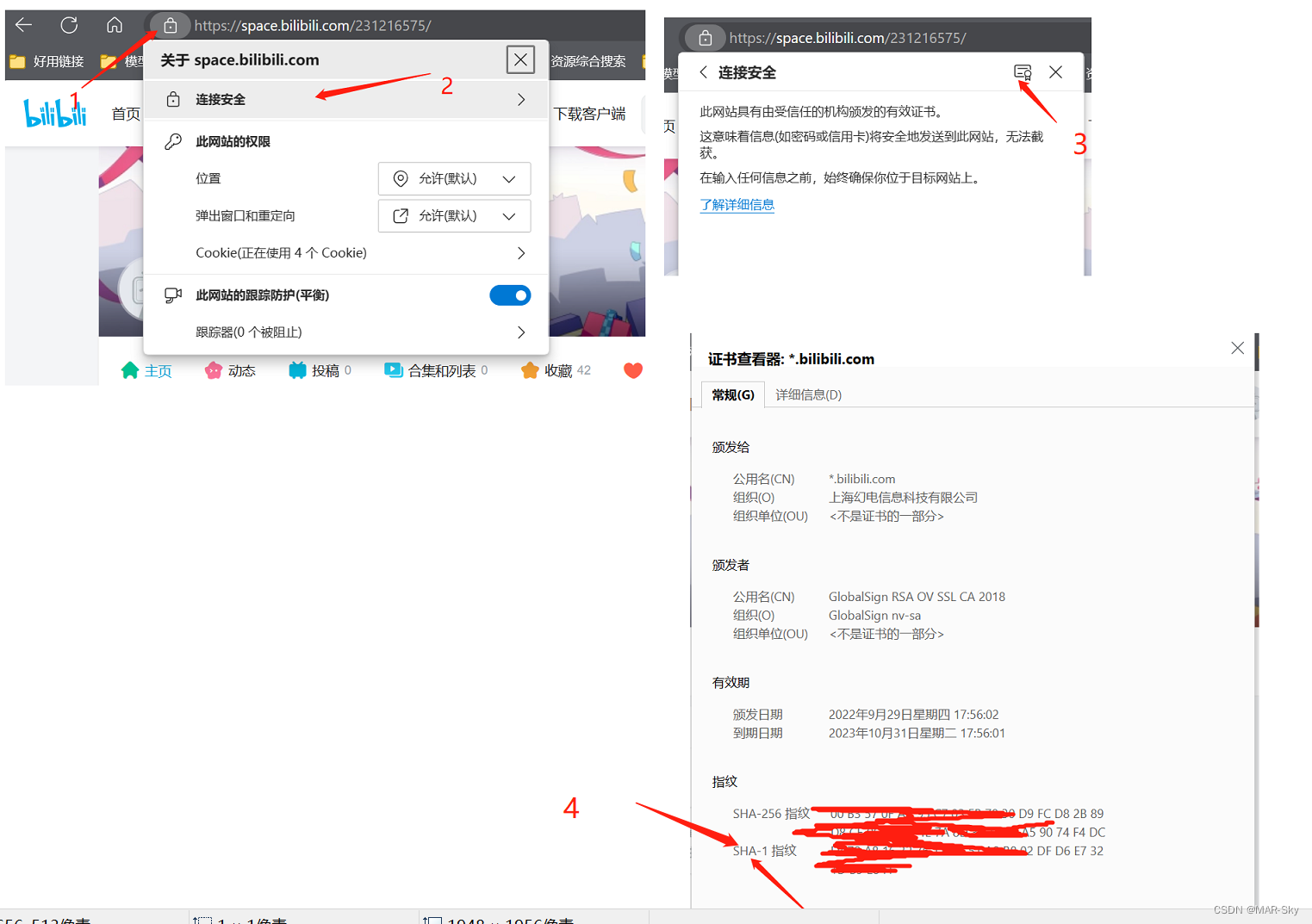
先手动从浏览器中得到数据的基本形式
获取方式:把前面得到的host+path+uid最为浏览器的URL,在浏览器中输入,得到类似下面的json文件的格式

使用json辅助工具快速得到解析的文本
**使用转换工具的目的:**为了访问数据时更加方便

使用辅助工具的方法如下:第二步的时候把得到的json数据文本放入
